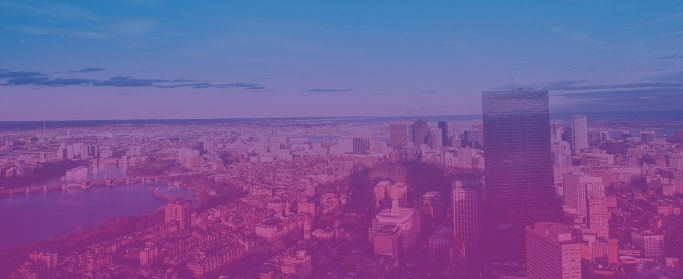Interview with Kris Douma, Director, Investment Practices & Engagement, PRI: INTERVIEW: What do the UN sustainable goals mean for investors?
Interviewer: Noel Hillmann, Managing Director, Clear Path Analysis
Interviewee: Kris Douma, Director, Investment Practices & Engagement, PRI
Noel Hillmann: How much potential do the Social Development Goals (SDGs) represent and how specifically will these goals create more market opportunities?
Kris Douma: Global GDP growth is a major factor in defining investment strategies, asset allocation and investment decisions. Advancing the SDGs will contribute to global GDP growth, taking that source of global GDP growth into account will create value, not taking them into account may put ‘value at risk’. That is the main reason for investors to address the challenge of the SDGs. However, there are additional reasons. Let me mention a few.
Many investors have subscribed or will subscribe to the statement that ultimately their investments in companies (and other entities) will only be profitable in the long term if societies develop in an equitable and sustainable way. This has also been framed as the concept of ‘universal ownership’ and is specifically relevant for asset owners who, based on Modern Portfolio Theory, choose to manage risks and spread their investments along a wide range of asset classes and geographies. Advancing the SDGs will be a way to manage global and systemic risks.
Last but not least, the SDG’s provide a clear road map for the development of the economy over the next 15 years (towards 2030), that will guide decision making and behaviour of both governments and companies. Knowing (more or less) what course the economy will take reduces risks and provides numerous investment opportunities. With companies globally moving towards more sustainable business practices, investors will potentially position themselves ‘ahead of the curve’, which makes perfect sense from a risk-return perspective. In other words, SDG’s provide clear investment opportunities.
Noel: What kind of initiatives do you have planned to support SDGs to create long term investment choices?
Kris: The global community, represented by the UN, adopted the Sustainable Development Goals in September 2015 (which include the PARIS Conference of the Parties (COP) agreement). The UN, being aware that UN and member countries cannot deliver on the SDGs alone, is currently looking for partnerships in the private sector.
To some investors, it may seem obvious that the SDGs (should) play an important role in the development of a responsible investment agenda. Others may ask ‘Why?’ Therefore, one of PRI´s priorities is to define a clear investment case for the SDGs to reach out to all our signatories and beyond to create awareness and commitment. Meanwhile we will of course take initiatives to facilitate the process to make the SDGs more investable, in collaboration with UN Global Compact, Global Reporting Initiative, Sustainable Accounting Standards Board, UN organisations and the World Bank Group. And we will provide guidance to our signatories on how they can integrate the SDGs in investment strategies, decisions and stewardship.
Noel: Can you talk to us about strategies in place to finance SDGs in less developed countries? How is the UN mobilising finance to reach their objectives?
Kris: If listed companies adopt the SDGs as a key driver of innovation, products, and services, investing in equities and bonds with a relevant contribution to SDGs will be relatively straightforward. But many of the SDG/challenges in less developed countries will require financial innovation. Small scale initiatives have to be packaged in investable entities.
In the financial market for renewable energy there is already some experience with blended finance, special purpose vehicles, public-private partnerships and risk mitigation for private investors with guarantees of public finance institutions. That experience will have to be deployed to allow capital shift to SDGs in less developed countries. PRI is obviously prepared to be a partner in that journey.
Noel: Despite investors growing interest in supporting SDGs, there are also barriers that are limiting further uptake. What steps are being taken to tackle the key constraints that have arisen so far?
Kris: Some of those barriers I´ve already addressed. My impression is that within a very short time institutional investors have realised that the SDGs are relevant to them. But it is not always in the traditional way, not always in a ´traditional´ view of what it means to fulfil your fiduciary duty.
The last couple of years it has become obvious that taking material ESG issues into account in investment strategies, decisions and active ownership is not against, but an integral part of an investor’s fiduciary duty. Fiduciary duty requires investors to act in the interest of the ultimate beneficiary. Is achieving the SDG’s part of those interests of beneficiaries? In other words, one may argue that the interests of ultimate beneficiaries are expressed in the (global support for the) SDG’s and achieving the SDG’s therefore should be part of an investor’s fiduciary duty.
Noel: There is a potential legal grey zone regarding implementation of the UNPRI to firms in different markets, which could be an obstacle to the global uptake of the principles. Are there any plans to formalise the commitment of signatories in a different way to overcome these legal obstacles?
Kris: The principles in the UN Global Compact are mainly ´do no harm´ oriented. The SDGs are mainly oriented towards positive outcome. And the principles of PRI, which are currently process oriented, are all global and widely accepted. The American comic Groucho Marx once said: ´These are my principles. If you don´t like them, I have others´, but that is not what the PRI will do.
Progress on some issues may go at a different pace in some areas and faster in others. The SDG-agenda states clear goals for 2030. PRI signatories often see themselves as long term investors, although there is still too much short termism, but if we do not act at least on the mid-term with a substantial shift of capital to the SDGs, the longer term may look very gloomy.
It’s early 2017, we don’t have much time to loose.
This interview is part of the 2017 Environmental, Social & Governance Investing 2017 Report - download your free copy.

